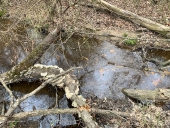
 7
7




 5
5




This is all just my opinion based on a flawed memory

 7
7




Living a life that requires no vacation.
 11
11




 6
6




Fish heads fish heads roly poly fish heads
 8
8




Weeds are just plants with enough surplus will to live to withstand normal levels of gardening!--Alexandra Petri
 8
8




Ara Murray wrote:Grow something. Even if you do not have any land you can grow something.
City of San Diego residents may self-load up to two cubic yards of compost or mulch for free with proof of residency.
 5
5




I make a Maple Syrup instructional movie! Check it out HERE
SKIP books, get 'em while they're hot!!! Skills to Inherit Property
See me in a movie building a massive wood staircase:Low Tech Lab Movie
 7
7




"The world is changed by your example, not your opinion." ~ Paulo Coelho
 4
4




 6
6




David said, My question to you is: if you were given this opportunity to introduce a single (simple) project to a group unfamiliar with permaculture, what would you choose? The goal is for them to taste enough success that they want to learn and do more.
Invasive plants are Earth's way of insisting we notice her medicines. Stephen Herrod Buhner
Everyone learns what works by learning what doesn't work. Stephen Herrod Buhner
 3
3




 2
2




This is all just my opinion based on a flawed memory






| I agree. Here's the link: http://stoves2.com |






